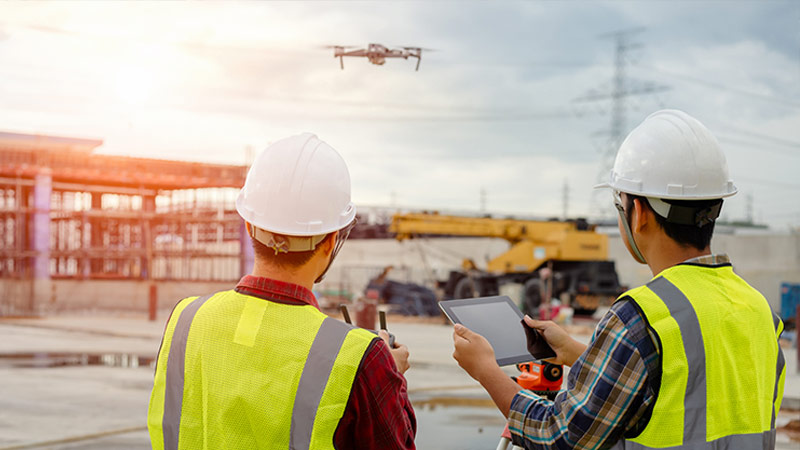Constructing the future: Exploring the exciting technologies shaping the construction industry
Author: OCRC
Posted on Dec 1, 2023
Category: Off-site Construction

The construction industry is undergoing a rapid and exhilarating transformation, propelled by cutting-edge technological advancements that are revolutionizing its landscape. Prepare to witness a construction renaissance as emerging technology trends poised to elevate efficiency and cost-effectiveness take center stage. In this blog, we will delve into the latest and most innovative technologies reshaping the construction sector, leaving a lasting impression on industry professionals and enthusiasts alike.
- 3D laser scanner: Renowned for its precision, the 3D laser scanner is a formidable tool for on-site surveying, mapping and project inspection. Its unparalleled accuracy facilitates seamless construction planning, resulting in substantial cost savings.
- 3D printing: Think of 3D printing as a real-life magic wand, materializing components and parts for construction projects. This technology is making waves by reducing waste and delivering cost-effective customizations, essentially bringing a futuristic, on-demand factory to the construction site.
- 4D simulation: The advent of 4D simulations represents a cutting-edge solution for time and cost optimization in both on-site and off-site projects. Widely adopted in the construction industry, 4D simulations are seamlessly integrated into most Building Information Modeling (BIM) software packages.
- Artificial intelligence (AI): AI is playing a pivotal role in construction, enhancing efficiency and reducing costs. AI-powered tools analyze data, providing valuable insights into project planning, design and construction processes.
- Building information modeling (BIM): Imagine a 3D modeling technology that creates a digital replica of a building, its components and systems. BIM facilitates improved visualization, collaboration, and communication among stakeholders, ensuring a smoother construction process. Leading BIM software such as Revit, Navisworks, Tekla, BIM Collab, Planarly and Autodesk BIM 360 are at the forefront of this technological wave.
- Blockchain technology: A game-changer for cost management and efficient procurement strategies, blockchain technology acts as a secure, decentralized digital ledger. In 2023 and beyond, we anticipate witnessing the widespread use of blockchain technology in the construction industry.
- Digital twin: Envision having a crystal ball to foresee operational hiccups in a building before it's even constructed. The digital twin technology does just that, offering a virtual test run of the building's prototype and enabling the prediction and resolution of potential issues.
- Drones: Drones are soaring high in the construction industry, providing aerial views and real-time data on project progress. They act as tireless surveyors and inspectors, ensuring everything is on track at the construction site.
- Internet of things (IoT): IoT technology is employed to collect data on buildings and construction sites, monitoring equipment and machinery. This technology enhances safety, reduces costs and improves project planning.
- Robotics: Automation of construction processes, such as bricklaying and concrete pouring, is achieved through robotics. This technology not only reduces costs but also enhances efficiency and minimizes the risk of worker injury.
- Virtual and augmented reality (VR/AR): These innovations offer an immersive experience, transporting stakeholders directly into the heart of the construction project through simulations.
- Wearable technology: Smart helmets and vests act as the superheroes of construction sites, monitoring worker health and issuing alerts in case of emergencies, blending safety and productivity seamlessly.
The construction industry stands at the forefront of a tech-powered transformation, where traditional methods are making way for intelligent and efficient solutions. Stay tuned for more updates as these technologies continue to shape the future of construction.